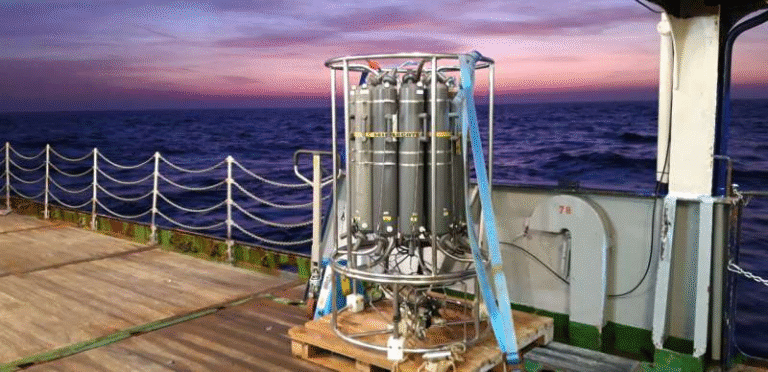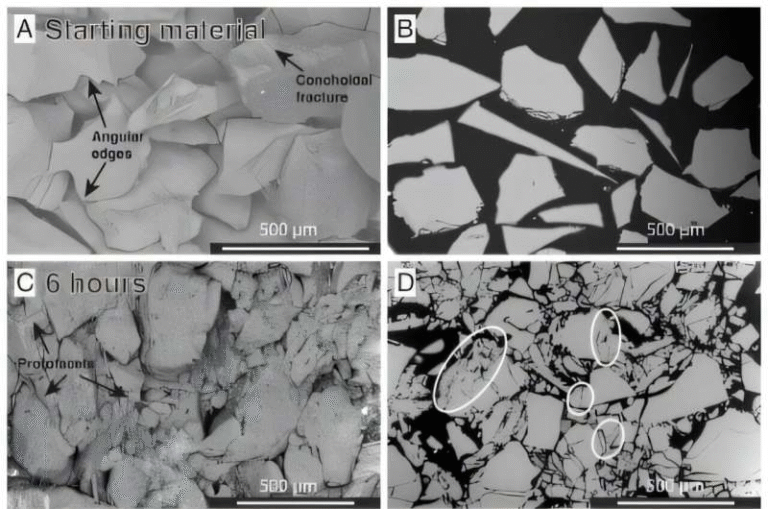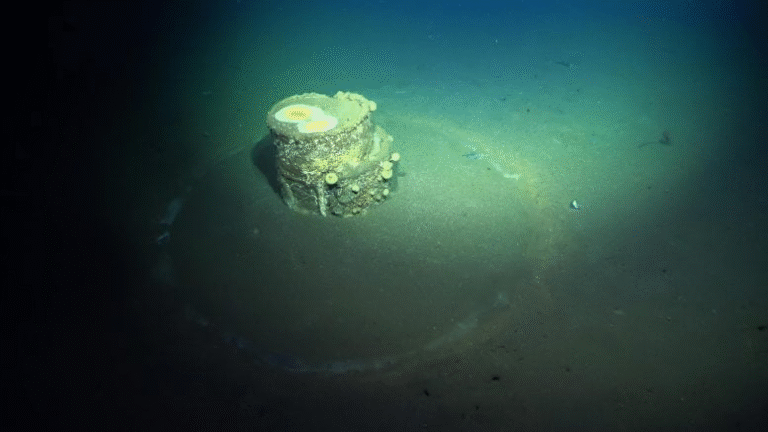Scientists Use Supercomputers to Reveal Hidden Rock Barriers Behind “Dry” Oil Wells

Oil wells drying up much earlier than expected has been a puzzle for geologists and engineers for decades. Despite advanced 3D seismic imaging suggesting that plenty of oil should still be underground, drilling operations often hit a frustrating wall: the wells suddenly stop producing.
A research team at Penn State University has now taken a closer look at this issue and uncovered an invisible culprit. Using one of the most powerful supercomputers in the United States, they have added a new time dimension to seismic imaging, exposing underground structures that block oil extraction but remain invisible to conventional scans.
This discovery could reshape how energy companies assess oil reservoirs, improve recovery rates, and avoid wasted drilling efforts. Here’s a detailed breakdown of what the team did, why it matters, and how it connects to broader advances in geology, computing, and energy science.
The Core Problem: Wells That Go Dry Too Soon
In oil exploration, the standard tool for mapping underground resources is seismic imaging. Much like an ultrasound for the Earth, seismic waves are sent into the ground, and sensors record how these waves bounce back. These recordings are then processed into 3D images of underground formations. When the waves slow down, that’s often an indication of oil-saturated rock.
The problem? These scans often tell an incomplete story. Many wells dry up after producing only a fraction of what was predicted. For example, drilling in the North Sea in 2008 was expected to produce oil for 20 to 30 years. Yet, after only two years, the wells ran dry. The oil wasn’t gone—it was inaccessible due to complex geological structures that seismic scans had overlooked.
This mismatch between predictions and actual production has cost companies billions, frustrated engineers, and left behind untapped reserves.
Penn State’s New Approach: Adding the Dimension of Time
The team at Penn State, led by Tieyuan Zhu, realized that existing 3D seismic methods were missing part of the picture. The 3D scans only captured one moment in time. What if the same oil reservoir were imaged repeatedly, over different dates, to see how signals changed?
By adding this time-lapse element, the researchers effectively created 4D seismic imaging. This allowed them to spot differences in how waves behaved through the same rock structure across time. They discovered that hidden barriers—such as thin layers of solid rock inside reservoirs—don’t necessarily affect the speed of seismic waves enough to be detected in 3D images. However, these barriers do block oil flow, preventing wells from reaching the reserves beneath.
In some cases, the solution could be surprisingly straightforward: drill deeper to bypass the obstructing layer and unlock access to the trapped oil.
How Seismic Waves Reveal Oil
Oil doesn’t sit in underground pools. Instead, it soaks into porous rock formations. Here’s how seismic imaging works in this context:
- Solid rock transmits seismic waves quickly and strongly.
- Oil-soaked rock slows down and dampens those waves.
- By mapping these differences, geologists can estimate where oil is and how much might be recoverable.
But until now, most imaging relied heavily on travel time—the time it takes for a wave to pass through the Earth. The Penn State team added another critical factor: amplitude. This measures how much the wave’s strength fades as it passes through oil-rich rock. By combining both time and amplitude, they built a more accurate picture of subsurface complexity.
The Role of Supercomputing: Why Bridges-2 Was Essential
To pull this off, the team needed enormous computing power. Seismic data sets are massive, and analyzing them requires both high processing speed and vast memory capacity. A standard workstation would buckle under the load.
Enter PSC’s Bridges-2 supercomputer, one of the nation’s leading advanced computing systems. It offered:
- Thousands of powerful CPUs for parallel processing.
- 256 to 512 gigabytes of RAM per node, essential for holding large data chunks in memory.
- Extreme memory nodes with up to 4,000 gigabytes of RAM, for even larger-scale computations.
- An allocation of 100,000 computing hours, provided through the NSF’s ACCESS program.
This setup let the researchers run full-scale viscoacoustic full-waveform inversion (Q-FWI) models, integrating both velocity and attenuation into their seismic imaging. Without such resources, this work would have been impossible.
Proof of Concept and Early Findings
The researchers began by testing their approach on a 9-square-mile area. By incorporating both time-lapse imaging and amplitude data, they successfully detected structures that traditional 3D scans had missed. These included impermeable rock layers that, while not obvious in speed-based imaging, created significant obstacles to oil extraction.
The early results were compelling: adding time and amplitude revealed that much of the “missing” oil was still there, just blocked. This means that the long-standing assumption—that oil had been prematurely depleted—was wrong in many cases. Instead, it was hidden geology doing the blocking.
The team is now scaling up their methods to cover dozens of square miles and exploring even larger applications using Bridges-2’s extreme memory nodes.
Why This Matters More Than Ever
In today’s world, efficiency in oil extraction isn’t just about profit—it’s about responsibility.
- Environmental stakes: Fewer unnecessary wells drilled means less disruption of landscapes and ecosystems.
- Economic stakes: Companies can avoid costly mistakes where predicted reserves fail to materialize.
- Energy security: Maximizing yield from existing fields reduces the pressure to exploit more fragile or remote environments.
With oil extraction increasingly moving into deeper and more remote sites, smarter imaging is not optional—it’s essential.
Extra Knowledge: Understanding 4D Seismic Imaging
Since this study hinges on adding a “time” dimension, it’s worth pausing to understand 4D seismic imaging more broadly.
- 3D seismic: Provides a snapshot of underground structures at one point in time.
- 4D seismic (time-lapse seismic): Captures changes in those structures over time, typically as reservoirs are exploited.
Applications go beyond oil:
- In carbon capture and storage (CCS), 4D seismic monitors injected CO₂ to ensure it stays trapped underground.
- In geothermal projects, it helps track changes in pressure and fluids.
- In environmental monitoring, it can detect changes caused by groundwater extraction or subsurface contamination.
Penn State’s work is part of a larger trend of using time-lapse imaging to better understand how Earth’s subsurface evolves.
Extra Knowledge: What Is Viscoacoustic Full-Waveform Inversion?
Another core method used here is viscoacoustic full-waveform inversion (Q-FWI). It’s a mouthful, but here’s the gist:
- Full-waveform inversion (FWI) is a computational technique that uses the entire seismic wavefield—not just arrival times—to reconstruct highly detailed images of the subsurface.
- Viscoacoustic modeling adds the effects of attenuation—how waves lose energy as they pass through different materials.
- The Penn State team took this further by integrating the Hessian matrix (second-order derivatives) to reduce crosstalk artifacts between velocity and attenuation, leading to more accurate models.
The payoff is a clearer, more reliable image of what’s underground.
Limitations and Next Steps
While promising, this work isn’t without challenges:
- Scale: Moving from 9 square miles to much larger fields will strain even the most powerful supercomputers.
- Data quality: Seismic data can be noisy, and high-quality recordings are crucial.
- Model assumptions: Attenuation models make simplifying assumptions that may not capture the full complexity of real rock physics.
- Cost: While computation is cheaper than failed wells, running these models at scale still requires significant resources.
The team is continuing to refine their methods, test on real-world oil fields like Norway’s Volve field, and explore broader applications.
Final Thoughts
Oil extraction has always been a balance between geology, technology, and economics. Wells drying prematurely is not just an inconvenience—it’s a symptom of how much we still don’t fully understand about the Earth beneath us. By merging advanced computing with geophysical innovation, the Penn State team is providing a way to close that gap.
Their work highlights how scientific advances can save money, reduce waste, and improve efficiency, all while helping us make smarter use of the planet’s resources.
Research Reference:
Advancing attenuation estimation through integration of the Hessian in multiparameter viscoacoustic full-waveform inversion – Geophysics (2024)





